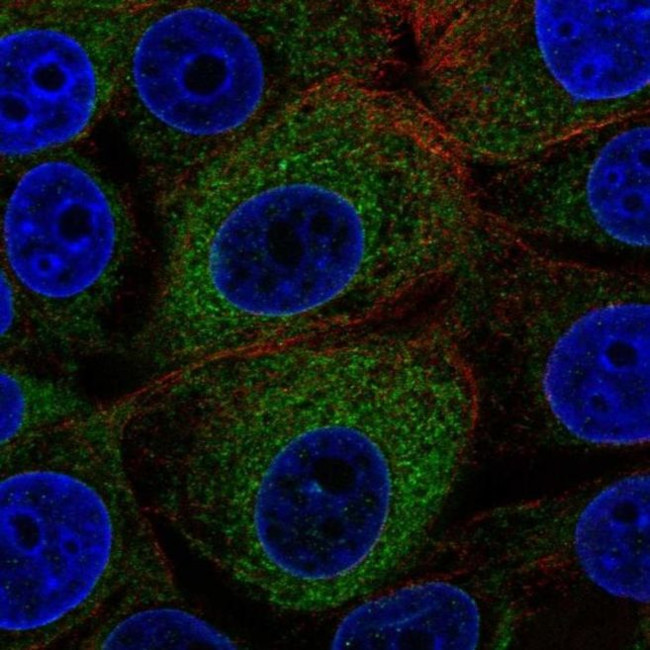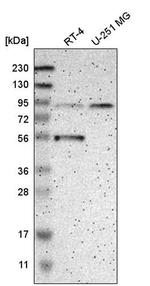Search Thermo Fisher Scientific
Product Details
PA5-64937
Species Reactivity
Host/Isotype
Class
Type
Immunogen
Conjugate
Form
Concentration
Purification
Storage buffer
Contains
Storage conditions
Shipping conditions
RRID
Product Specific Information
Immunogen sequence: LESHAEGFRER FEKTFQLKEK GLSSGEQVLG QAALSGLLGG IGYFYGQGLV LPDIGVEGSE QKVDPALFPP VPLFTAVPSR SFFPRGFLWD EGFHQLVVQR WDPSLTREAL GHWLGLLNAD GWIG
Highest antigen sequence identity to the following orthologs - mouse 89%, rat 88%.
Target Information
GCS1 cleaves the distal alpha 1,2-linked glucose residue from the Glc(3)Man(9)GlcNAc(2) oligosaccharide precursor in a highly specific manner. Defects in GCS1 are the cause of type IIb congenital disorder of glycosylation (CDGIIb). This syndrome is also known as glucosidase I deficiency and is characterized by marked generalized hypotonia and hypomotility of the neonate, dysmorphic features, including a prominent occiput, short palpebral fissures, retrognathia, high arched palate, generalized edema, and hypoplastic genitalia. Symptoms include hepatomegaly, hypoventilation, feeding problems and seizures. The clinical course is progressive and survival is at most a few months.
For Research Use Only. Not for use in diagnostic procedures. Not for resale without express authorization.
References (0)
Bioinformatics
Protein Aliases: glucosidase I; Mannosyl-oligosaccharide glucosidase; Processing A-glucosidase I
Gene Aliases: CDG2B; CWH41; DER7; GCS1; MOGS
UniProt ID: (Human) Q13724
Entrez Gene ID: (Human) 7841

Performance Guarantee
If an Invitrogen™ antibody doesn't perform as described on our website or datasheet,we'll replace the product at no cost to you, or provide you with a credit for a future purchase.*
Learn more
We're here to help
Get expert recommendations for common problems or connect directly with an on staff expert for technical assistance related to applications, equipment and general product use.
Contact tech support


